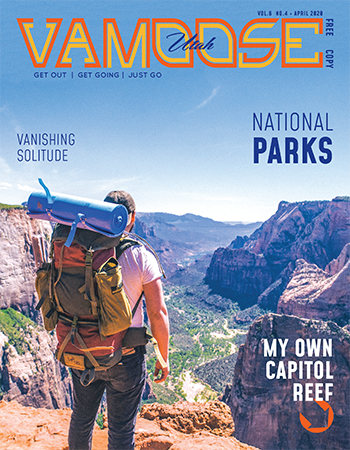Flying discs plus golf equals fun, friendship and ching!
I first played “Frisbee golf” more than 20 years ago in a junior high school parking lot. We used regular old Wham-O’s and the same rules as ball golf—hit the target (light pole) in the least amount of shots. We played two or three more times before we both forgot about it. Then, within one week in 2009, two different strangers told me that disc golf is a real sport.
They explained that there are courses in public parks where you throw three types of discs—sharp-rimmed drivers, blunter midranges and stubby putters—at metal baskets draped with chains. It seemed silly to use more than one disc, much less a bag of 20-plus, and to stretch before throwing like the man in the group ahead of us. Moments later, I watched the same guy, effortlessly and gracefully launch a disc more than 300 feet, landing 5 feet from the basket.
parks where you throw three types of discs—sharp-rimmed drivers, blunter midranges and stubby putters—at metal baskets draped with chains. It seemed silly to use more than one disc, much less a bag of 20-plus, and to stretch before throwing like the man in the group ahead of us. Moments later, I watched the same guy, effortlessly and gracefully launch a disc more than 300 feet, landing 5 feet from the basket.
I wanted to do that. My new friend, Arnie, handed me a midrange called a Roc. Although denser and certainly heavier than any Frisbee I’d owned, I figured it couldn’t be much different. Arnie tried to explain that these discs required a totally different technique. I brushed him off (“It’s a Frisbee, dude.”) and threw. The disc traveled about 60 feet before diving hard left—right into the ground. I finished the round some 50 strokes above par, but had a great time.
We played daily from mid-March to late November. Soon, I had my own bag crammed with colorful discs that all flew differently and had names like Sidewinder, Valkyrie and Destroyer. Arnie “the novice,” and I, “the noob,” watched more experienced players throw crazy 300- to 500-foot shots—left-banking hyzers, right-banking anhyzers, snaky and surgical s-curves, tight flex shots, long rollers, high helixing tomahawks, upside-down scoobers, and laser-beam tunnel shots through and over thick woods. These led to shorter second or third shots that made the sweet, satisfying sound of ching! when discs hit chains. For disc golfers, ching! is like the telltale crack of a home run, or the swish-snap of a three-pointer. It signals success, and we yearn to hear it.
Sometimes you smash chains on a drive. Laypeople call it a hole-in-one; golfers of any stripe call it an ace. In regular golf, the ball either lands in or rolls into the cup. In disc golf, you can hit one the conventional way—on the fly, or from skips—or nail one on a fluke, like when a roller hits a rock and jumps in. A friend of mine once threw too low, but the wind caused his disc to rise and fall dramatically until, 310 feet later, the wind lifted the disc into the chains. After eight years of playing, I have had three aces: one on a fat s-curve and two from skips.

We crave aces, but there’s more to the game. Any disc golfer can recite a litany of the sport’s redeeming qualities. Simply walking the courses, communing with nature, is good for the soul. Throwing anything is cathartic; doing so with more finesse than force is pure Zen. Watching that disc soar through lush green parks, majestic mountain courses and rocky deserts is transcendent.
Then there’s the social aspect. The disc-golf community transcends gender, class, race, sexual orientation and levels of fitness. It’s inclusive and nurturing; we love to share the game with others, and help noobs learn. We take joy in each other’s successes, even when we’re playing horribly. We linger on the course when the game is done, talking shop, telling stories, teasing each other, trading discs and tips, and making plans to travel to tournaments together. The game is the nexus that connects us, and the bond is strong.
Consequently, we play day and night, 365 days a year, in all kinds of weather, even blizzards. Few activities offer such fulfillment. Disc golfers have a long-standing professional organization for the sport (the PDGA), and top pros are even beginning to pop up on ESPN highlights. The sport’s popularity is growing but there are no reliable metrics—yet. So, ask around. Chances are a family member, friend or co-worker plays. And we’d be stoked to show you how.

How to Get Started Playing Disc Golf?
PDGA.com lists 63 disc golf courses statewide, most of them free to play. The game’s spiritual home in Utah is The Walter F. Morrison Disc Golf Course at Creekside Park (1650 E. Murray-Holladay Road [4800 South], Millcreek), named for the Utahn who invented the flying disc, which was co-designed by Steady Ed Headrick, the “Father of Disc Golf.” During summer months, for a high-altitude challenge on mountain slopes, try Solitude Mountain Resort in Big Cottonwood Canyon (SkiSolitude.com/summer-activities/disc-golf).
Also, check out Utah’s revived original first disc golf court designed by Headrick, Roots, Jordan River Disc Golf Course (1250 N. Redwood Road, Salt Lake City). Utah County has the hidden and very technical Art Dye Disc Golf Park (573 E. 700 North, American Fork). Down south there are three gems for weekend trips: the challenging Rim Rock Disc Golf Course (1st tee at The Rim Rock Patio, 2523 E. Highway 24, 3 miles east of Torrey), a picturesque course at Goblin Valley State Park (Goblin Valley Road, Green River) and the isolated camping-friendly course (you’ll need a SUV) at Base Camp Adventure Lodge (Lockhart Basin Road, Moab).
Get Gear
For in-person, hands-on assistance, Play It Again Sports (located in Sugar House, Cottonwood Heights and Orem, PlayItAgainSportsSaltLakeCity.com, PlayItAgainSportsOrem.com) is a great source for new and used discs. Logan-based Infinite Discs (1125 W. 400 North, No. 120 Logan, 435-799-1106, InfiniteDiscs.com) aims to be one of the country’s largest online disc golf retailers but also has a storefront and an informative website. Discs start as low as $8.
Be Cool
Relax. Have fun. Observe basic disc golf etiquette: Don’t throw until the group ahead of you moves on to the next hole. If your disc is headed toward another player, shout “fore!” If you must play in a large group, allow smaller groups to play through.



